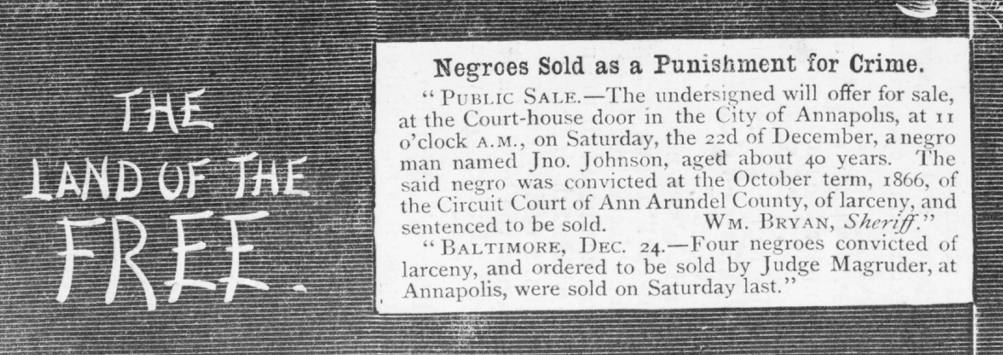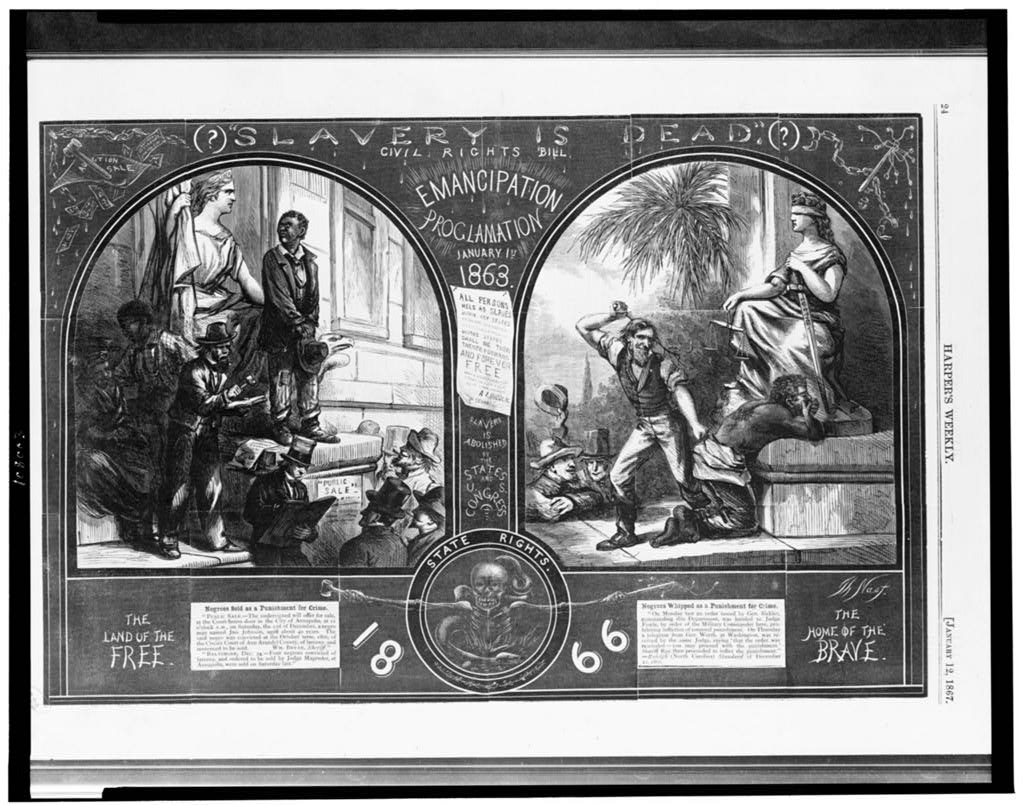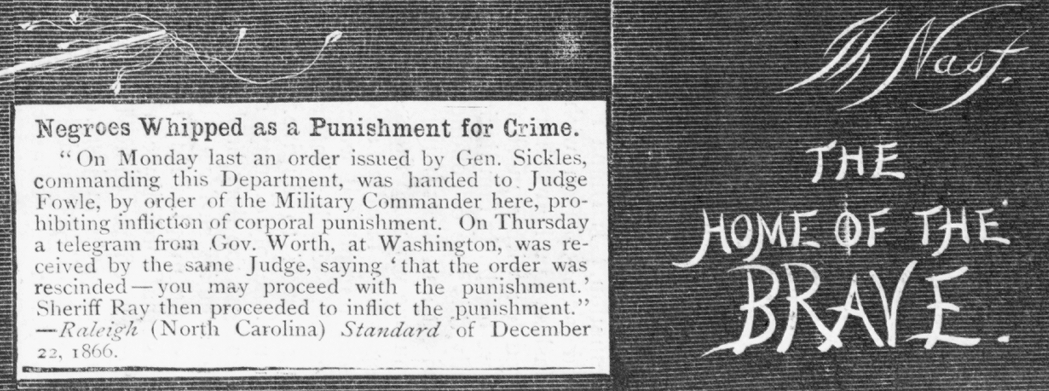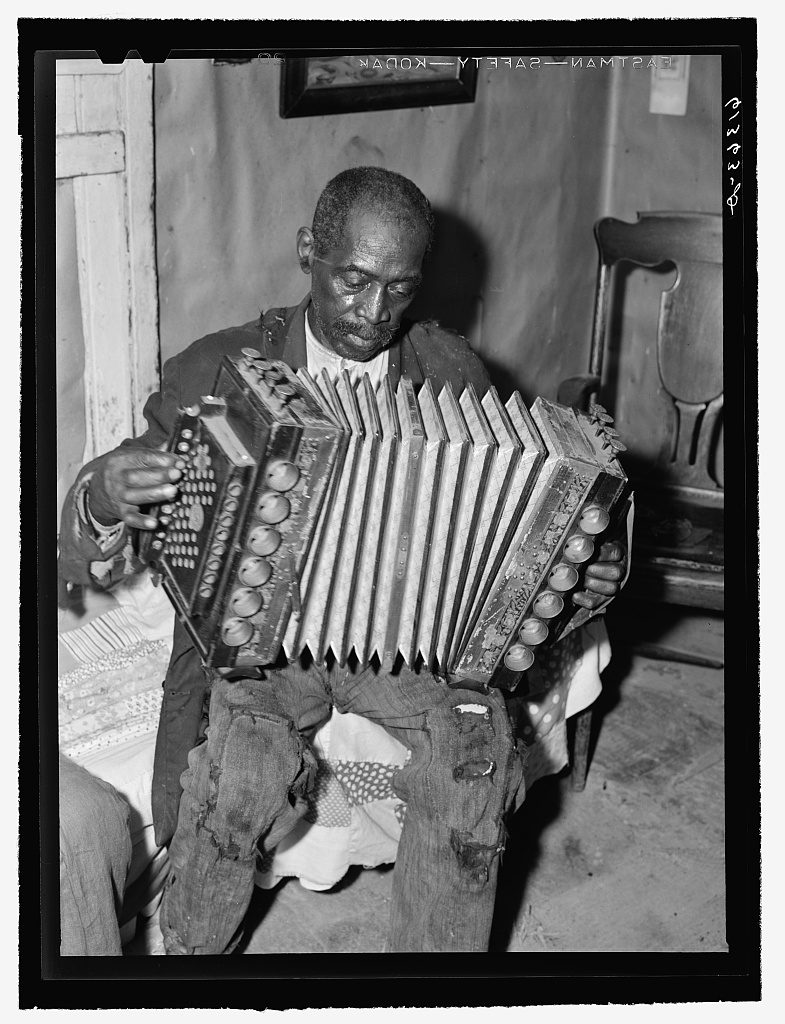From The New-York Times January 24, 1867:
No More Negroes to be Sold in Maryland …
ANNAPOLIS, Wednesday, Jan. 23.
The Maryland Legislature have passed an act abolishing an article in the code permitting the sale of negroes into slavery as punishment for crime. There will hereafter be no distinction in the State in the mode of punishing white and black criminals.
The Senate adopted a report against suspending bounties to colored soldiers. …
According to a Thomas Nast cartoon in the January 12, 1867 issue of Harper’s Weekly the Maryland legislature’s action was not a mere formality:
Maryland ratified the Thirteenth Amendment to the United States Constitution on February 3, 1865. The Amendment abolished slavery, except as punishment for crime. According to William Starr Myers in his 1909 The Self-Reconstruction of Maryland
1864-1867 (Page 180), the Maryland legislature passed an act dealing with the status of the black population on March 24, 1865. Former slaves were to be treated just like white folks, except that they couldn’t testify at trials of white people and they could be “sold for crime for the same period that a white man might be confined in the penitentiary for the same offence.”
According to the same cartoon convicted freeman were being whipped as punishment:
______________________________________________
In his biography of Andrew Johnson, Hans L. Trefousse wrote that the relatively soft terms of presidential reconstruction made the South more resistant to change. An observer noted that
immediately after the war, the Southern leaders had been thoroughly subdued. Expecting no mercy from the government, they were prepared to submit to anything, even Negro suffrage, they thought would be required of them. “But the more lenient the government, the more arrogant they became.”
The president’s approach to reconstruction accorded with his beliefs about states’ rights, but this “reanimated Southern resistance and fatally undermined efforts to integrate freedmen into society.”[1] Once they were freed, President Johnson was never going to push for greater rights for the former slaves.
You can take out a much larger version of the Thomas Nast cartoon at the Library of Congress, which also provides the September 1940 photograph of “John Dyson, FSA (Farm Security Administration) borrower, playing the accordion. He was born into slavery over eighty years ago. Saint Mary’s County, Maryland”
- [1]Trefousse, Hans L. Andrew Johnson: A Biography. New York: W.W. Norton & company, Inc., 1997. Print. pages 232 and 233.↩




